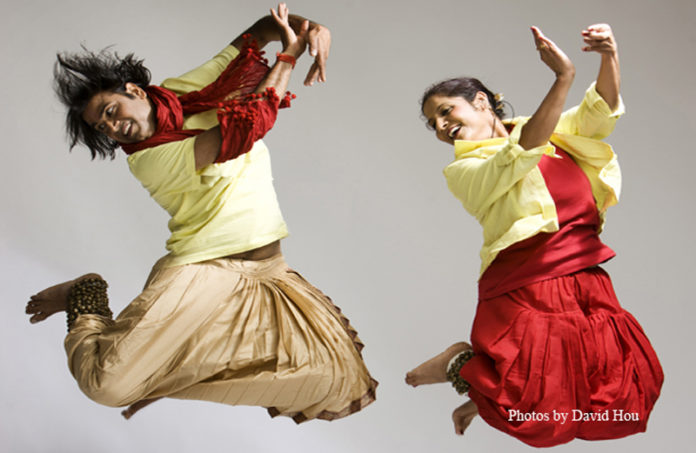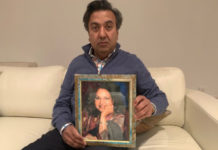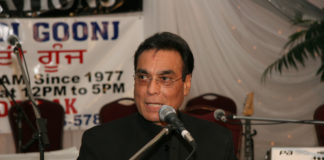Rina Singha, renowned Kathak performer and choreographer, should be credited for planting the great classical dance Kathak in Canada


TORONTO: There is something admirable about pioneers in any walk of life who blaze a new trail. Rina Singha is one such pioneer in Canada.
She arrived in Toronto in 1965 as an exponent of great classical dance Kathak. But at that time no one in Canada had heard of Kathak, or indeed any of other classical dances from India – Bharatanatyam, Odissi or Kathakali. Few knew about India and Indians at that time.
Over the decades, through her performances and classes, her writings and lecture/demonstrations, Rina has created a special place for Kathak in Canada. And her dogged struggle to broaden the repertoire of dance through grants from the Ontario Art council and the Canada Council for the Arts has paid off.
By celebrating the fifth Kathak Mahotsav in Toronto this year at Harbour Front, Rina Singha has enriched the multicultural ethos of Canada immeasurably and has made Kathak and other Indian dances an essential part of the dance scene in the country.
Under the tutelage of Rina and other gurus from India, Toronto is now home to many budding and distinguished Kathak dancers who are taking an ancient dance form that once flourished largely in temples and royal courts to new heights.
Since Kathak – ‘telling stories through dance’ – is so inseparably linked to Indian epics and mythology, one could say that to appreciate it is to submerge invariably in Indian culture in all its rich and varied fecundity. But now, as the young Kathak dancers are experimenting with new stories and new dances from the West, something new is aching to take birth.
Over four evenings, Kathak Mahostav presented a wide range of dancers, from a 13-year- old boy Tanver Alam from Montreal to Rina Singha herself. It was a celebration of the virtuosity of the dance form – from pure and vibrant movements to endearing Abhinaya that so subtly weaves and unravels a story.
On one evening, highly accomplished duo of Hemant and Vaishali Panwar, dancing to live music, thrilled the audiences with their dexterity and imaginative improvisations. This is when Kathak is at its best, as it reveals its full creative potential as a way of telling a story and also as pure movement, full of aplomb. In the pirouettes of Hemant and Vaishali, and in their Abhinaya and songs, the chivalry and romance of Rajasthan came alive. It was enchanting!
Reflecting the spirit of Canadian multiculturalism, Sudeshna Maulik brought her most promising talent as a performer – and her group of young dancers – from Montreal where, like Rina in early years in Toronto, she is introducing the grandeur of Kathak to Quebec. And from there, she has taken Kathak far and wide – to Florida, Europe, China and Russia.
Watching other dancers – Paul Gupta, Reshmi Chetran, Keisha Sooknanan, Nirjhum Proshanti, Sharda Samaroo, Salisha Purushuttam, Divya Gossai, Namita Deodhare, Sadiyah Shamsuzzaman, Tanver Alam, Grishma Hirode – perform with dedication, one becomes aware how Kathak, and other Indian classical dances, are drawing students and admirers from every part of Canada, indeed the world.
This is no small achievement, especially when one recalls that not long ago, dancing for girls in India was considered far from respectable, and few had any opportunity to learn it.
By presenting Kathak Mahotsav in Toronto, Rina Singha has shown that Kathak is firmly planted in Canada, and its flowers are blooming everywhere.
(Dr. Sehdev Kumar, Professor Emeritus, now lectures at the University of Toronto. He comments regularly on Indian arts and culture. Sehdev.kumar@utoronto.c)









As a teenager,I’d once had the privilege of watching the famed Kathak dancer Birju Maharaj dance at a private performance. I was spell-bound. He had such control over every movement. He said that while dancing he could control the number of bells he wanted to be heard that were tied around his ankles. He could, and demonstrated it, going from having all of them jingle to gradually getting it down to just one. All of us held our breaths as he danced around nimbly, allowing only one little ankle bell to tinkle.
The dancer explained that artists used their medium to describe objects and emotions. The medium of dancers was body movements. He challenged us to throw out random words and phrases at him, which he would try and describe to us through dance. One of those I called out was, ‘cannon’. He did a thorough job of ‘describing’ one. The cannon was brought to life that night through Kathak.
Thank you for this review and write-up.It feels good to know how Indian culture, especially Kathak, has grown in Canada. Proud of all these artistes for their contribution to not only Indian heritage and culture but also contributing positively to world culture.
Excellent feature!
Thanks Dhruv.